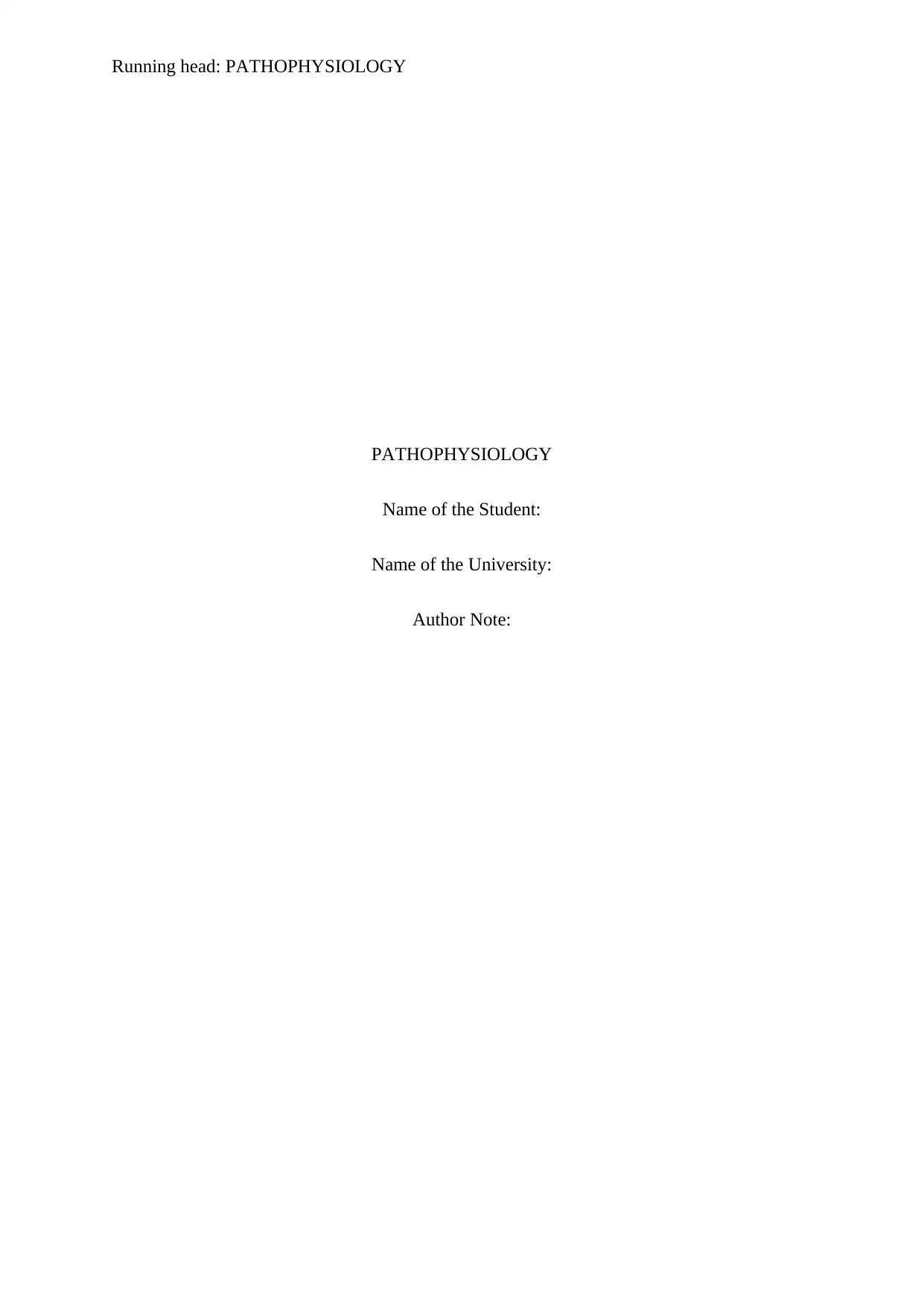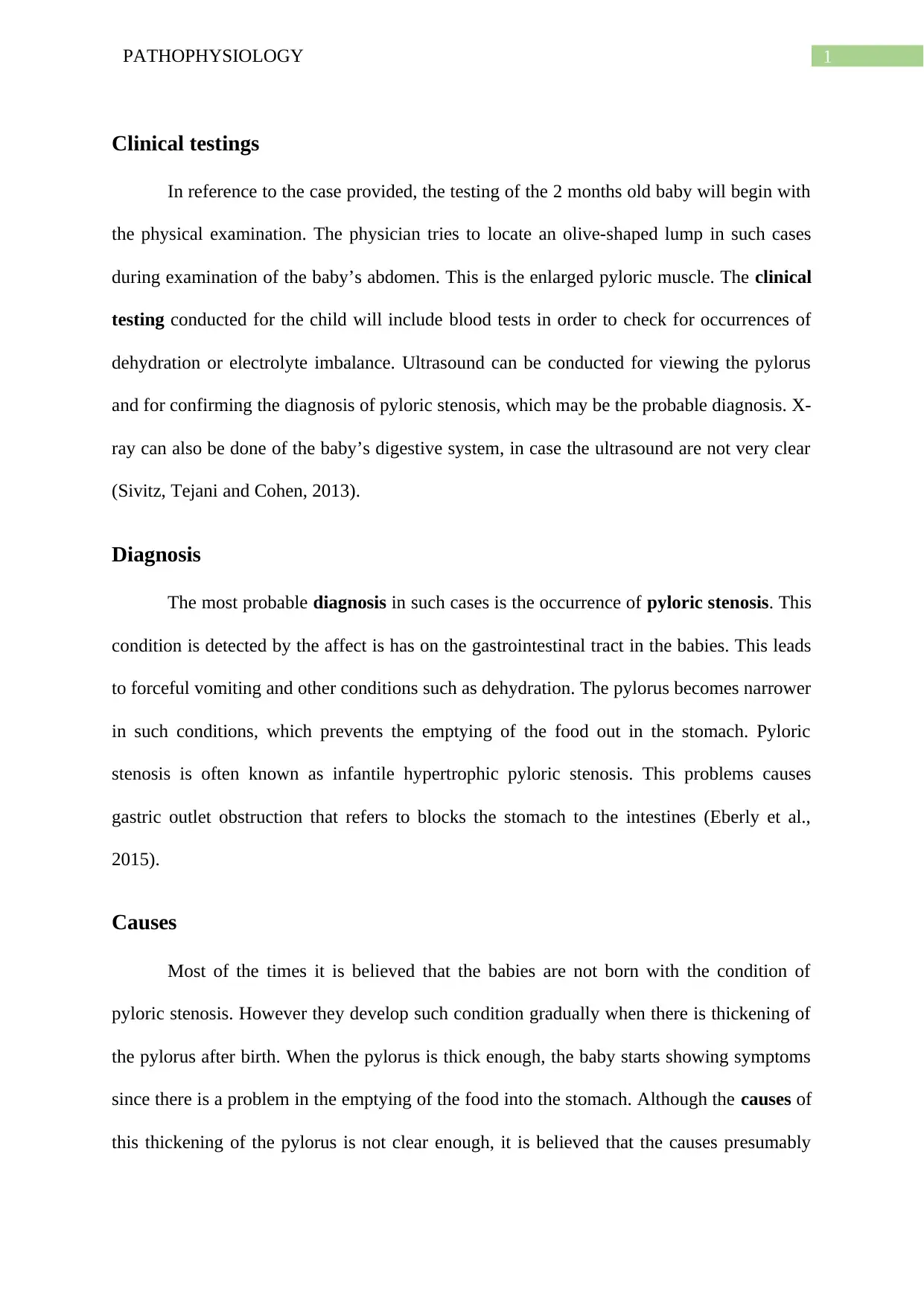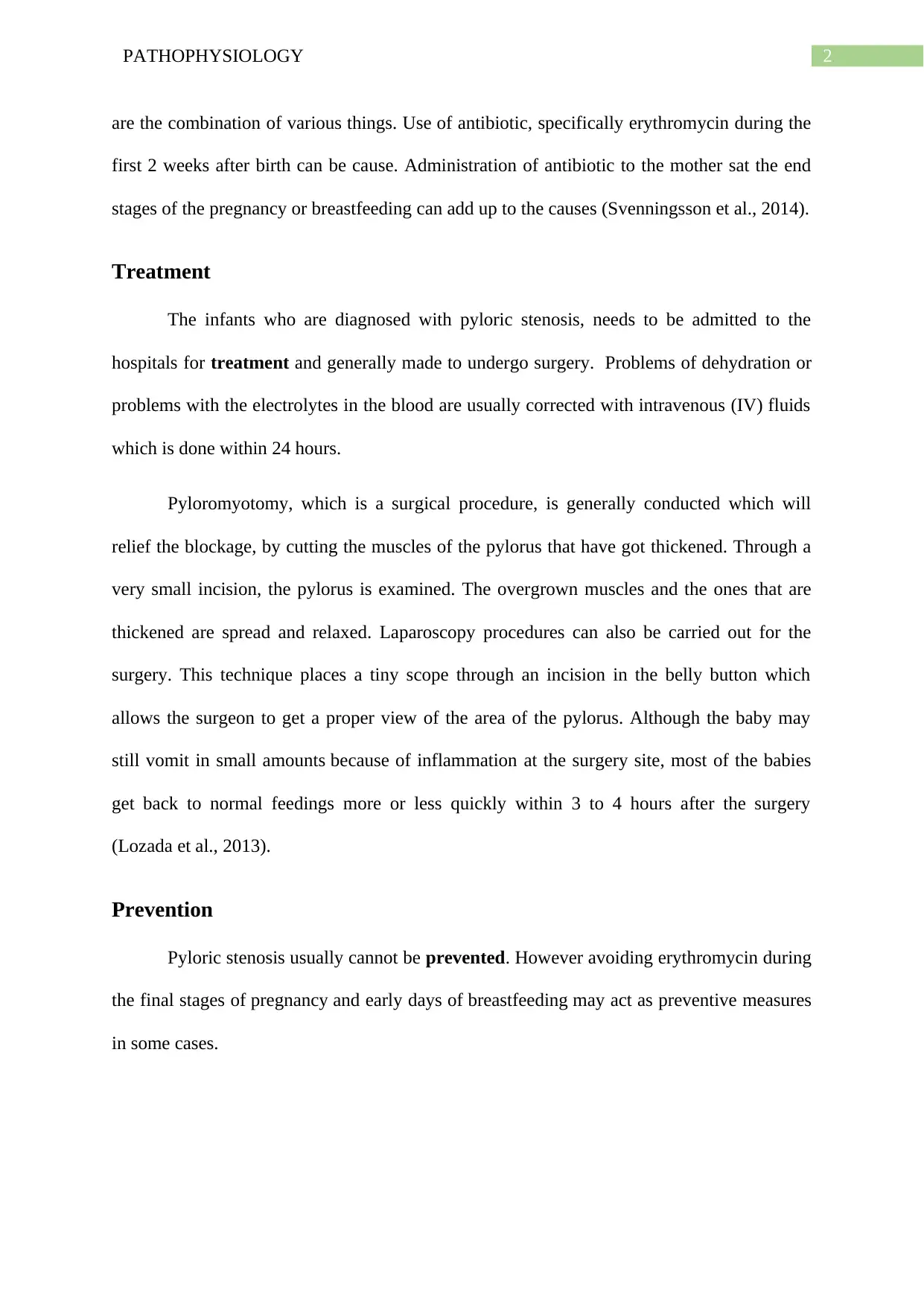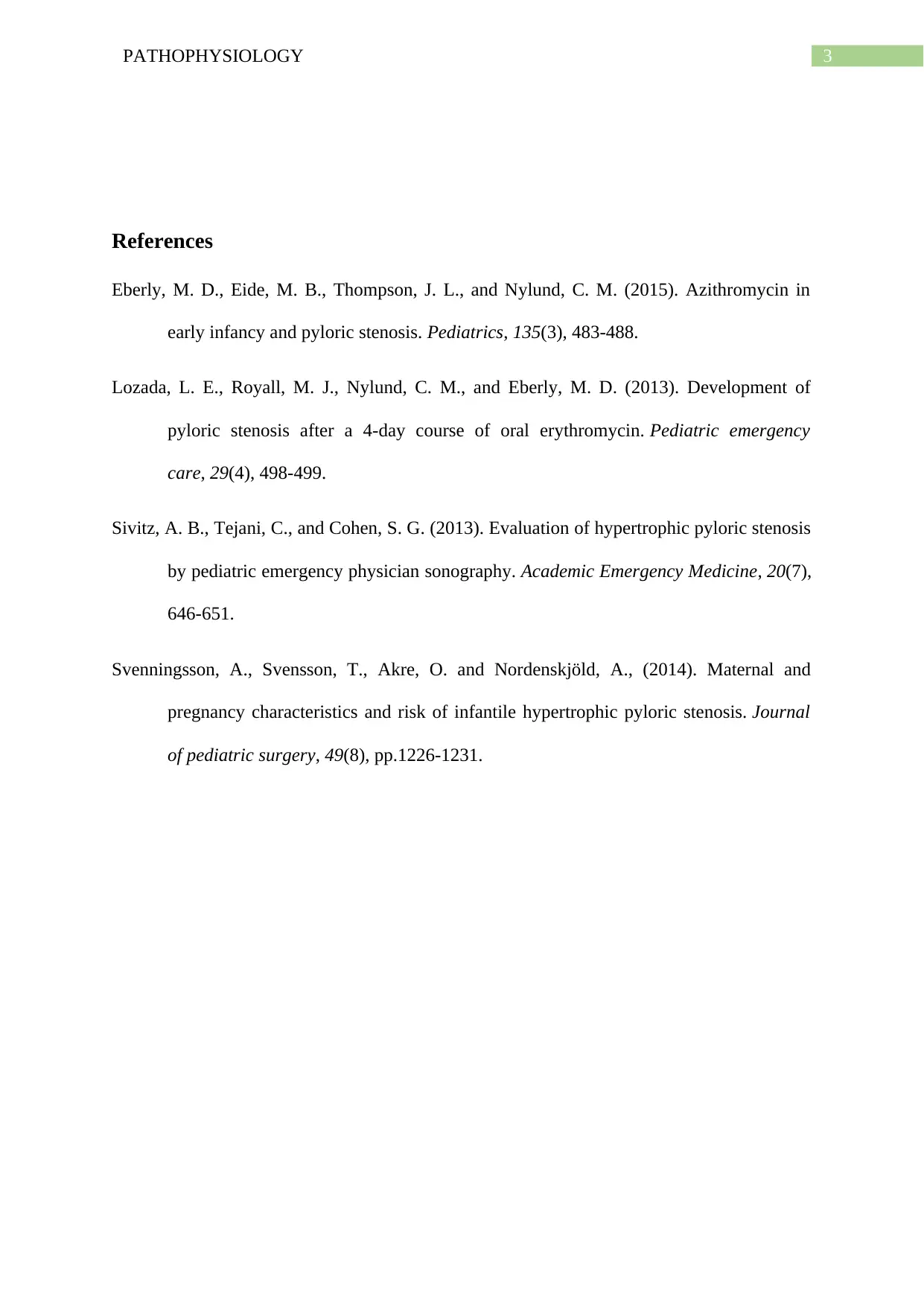Pyloric Stenosis: Understanding Diagnosis, Causes, and Treatment
VerifiedAdded on 2023/06/10
|4
|788
|221
Case Study
AI Summary
This case study delves into pyloric stenosis, a condition affecting infants and causing gastrointestinal distress. The study begins with clinical testing methods, including physical examinations, blood tests, ultrasounds, and X-rays, to diagnose the condition accurately. Pyloric stenosis, characterized by the narrowing of the pylorus, leads to forceful vomiting and dehydration. While the exact causes remain unclear, factors like antibiotic use in early infancy or by the mother during pregnancy or breastfeeding may contribute. Treatment primarily involves hospitalization, correction of electrolyte imbalances, and surgical intervention, typically pyloromyotomy, to relieve the blockage. Although pyloric stenosis is generally not preventable, avoiding erythromycin during pregnancy and early breastfeeding might serve as a preventive measure in some instances. Desklib offers a wealth of similar case studies and solved assignments for students.
1 out of 4





![[object Object]](/_next/static/media/star-bottom.7253800d.svg)